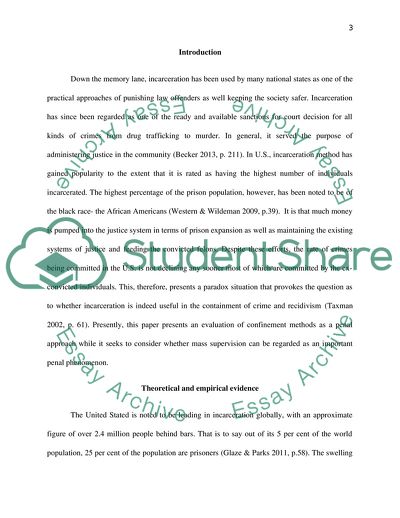Cite this document
(Mass Supervision Is At Least As Important a Penal Phenomenon as Mass Incarceration Essay Example | Topics and Well Written Essays - 4000 words, n.d.)
Mass Supervision Is At Least As Important a Penal Phenomenon as Mass Incarceration Essay Example | Topics and Well Written Essays - 4000 words. https://studentshare.org/sociology/1871610-mass-supervision-is-at-least-as-important-apenal-phenomenon-as-mass-incarceration
Mass Supervision Is At Least As Important a Penal Phenomenon as Mass Incarceration Essay Example | Topics and Well Written Essays - 4000 words. https://studentshare.org/sociology/1871610-mass-supervision-is-at-least-as-important-apenal-phenomenon-as-mass-incarceration
(Mass Supervision Is At Least As Important a Penal Phenomenon As Mass Incarceration Essay Example | Topics and Well Written Essays - 4000 Words)
Mass Supervision Is At Least As Important a Penal Phenomenon As Mass Incarceration Essay Example | Topics and Well Written Essays - 4000 Words. https://studentshare.org/sociology/1871610-mass-supervision-is-at-least-as-important-apenal-phenomenon-as-mass-incarceration.
Mass Supervision Is At Least As Important a Penal Phenomenon As Mass Incarceration Essay Example | Topics and Well Written Essays - 4000 Words. https://studentshare.org/sociology/1871610-mass-supervision-is-at-least-as-important-apenal-phenomenon-as-mass-incarceration.
“Mass Supervision Is At Least As Important a Penal Phenomenon As Mass Incarceration Essay Example | Topics and Well Written Essays - 4000 Words”. https://studentshare.org/sociology/1871610-mass-supervision-is-at-least-as-important-apenal-phenomenon-as-mass-incarceration.


